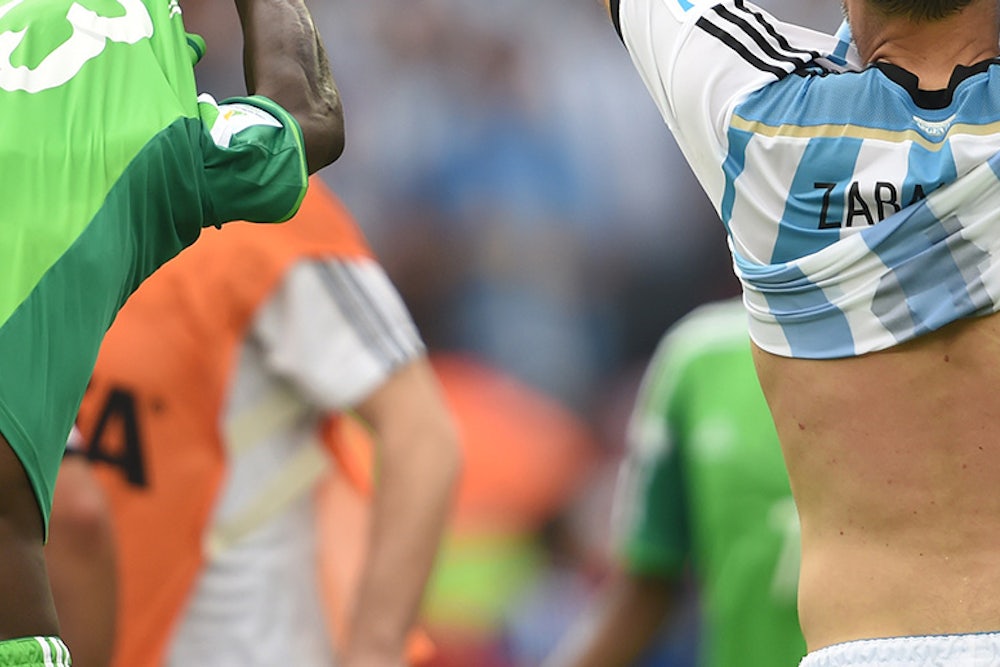Monday's US-Portugal match marked the first-ever World Cup water break. A Brazilian judge ruled last week that players must be allowed to take a minute off to rehydrate if temperatures climb above 32 degrees Celsius (90 degrees Fahrenheit).
The heat in this year’s World Cup has been historic, and ever since Brazil was announced as the host, players and their coaches—especially Europeans unaccustomed to tropical heat—have been panicking. Recent research, though, shows that the effects of high temperatures on soccer players’ performance aren’t all bad.
In 2012, a team of sports researchers, led by the University of Exeter’s Magni Mohr, designed an experiment to investigate the effects of temperature on soccer performance. Mohr and his co-authors recruited 17 elite male soccer players, encompassing all outfield positions, and had them play in two games, six days apart. The first game—the control—took place in an indoor hall set to the moderate temperature of about 70 degrees Fahrenheit; the second game was played outside in an uncomfortably hot 109 degrees. The researchers used cameras and tracking devices to collect data on the total distance travelled by the players over the course of each game and the amount of time per game spent in high-intensity running and sprinting.
GPS devices revealed that players covered more distance when the weather was comfortable: The total distance covered by each athlete was 7 percent shorter in the hot condition than in the control. However, by other measures, athletes actually performed better in the higher temperature. Their peak sprinting speed was 4 percent faster, even though they spent just as much time sprinting. And they actually had a higher success rate for passes: In the hot condition, 73.8 percent of all passes were successful, compared to 66.1 percent in the moderate indoor hall. The athletes playing in the hot environment also spent 25 percent more time in possession of the ball.
It's possible, though, that temperature does not inhibit the total distances that players are able to run. A 2010 study published in the Scandinavian Journal of Medicine & Science in Sports (by a team of researchers led by Dr. Kerem Tuncay Ozgunen of Cukurova University in Turkey) used tracking devices to monitor eleven soccer players during two competitive games in June and July in 2007. The June game took place in 93-degree heat, while the average temperature during the July match was 97 degrees. Ozgunen found that his players covered greater distance when the weather was hotter: In the July game, each player travelled an average of 8,613 meters over the course of the game—nearly 500 meters more than in June.
Interestingly, players were no more fatigued after they played in the hot condition than in the control. Mohr and his team had the athletes undergo a repeated sprint test before and immediately after they finished playing. Unsurprisingly, all players were slower post-game—but the reduction in speed was no greater if they played in the hot weather. “While body core hyperthermia may hamper prolonged exercise performance ... a potential benefit of the elevated muscle temperature may be gained,” write the authors. “Specifically, increased muscle temperature has been shown to enhance sprint performance during a football game.”
Individual differences in response to heat, of course, may trump other factors. “Physical activity during a hot game is not simply a function of absolute core temperature," writes Mohr, "But may potentially be dictated by individual differences in the response to and the perception of heat."
